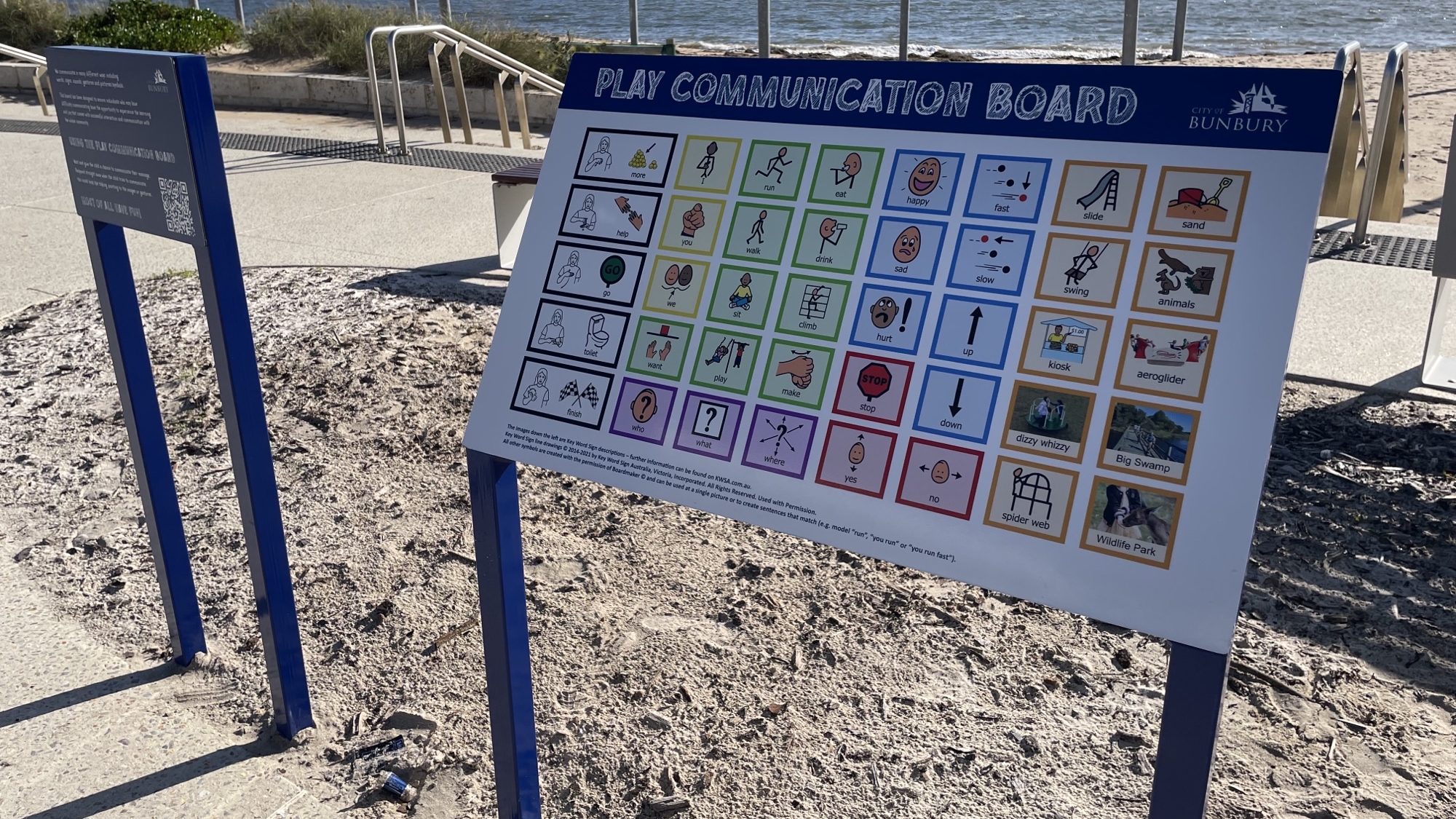

Two community members from Bunbury with expertise in speech pathology and augmentative communication instigated a collaborative project in partnership with the City of Bunbury to develop and install the Communication Chat Boards in the Bunbury community. These have now been installed at Koombana Bay and the Bunbury Accessible Playground at Big Swamp Reserve.
The design and specifications were considered by the City’s Co-Design Access Panel (CoDAP) to ensure they were functional for people living with disability, their carers and able-bodied users.
The boards are a form of AAC – Alternative and Augmented Communication (AAC), which refers to any system, device or method that improves the ability of a person with a communication difficulty to communicate effectively.
Why do we use AAC?
Being able to communicate with each other is a human right.
Those with difficulties communicating may not be able to gather information, build relationships, participate in employment and education opportunities and be safe in the community.
AAC is used as a tool to help understanding and is used by people to express what is going on in their minds.
It allows for needs, wants and opinions to be heard for all.
New social connections and friendships can be built or maintained through AAC.
Using AAC causes no harm and helps to reduce frustration.
It’s also been proven to extend developmental skills that a person is already learning and using.
Who do we use it with?
Lots of people benefit from the use of AAC. This includes people who are not able to use speech to communicate effectively, those who have developmental delays or disorders and those who can communicate using speech but they are not understood by others or their speech is not functional.
AAC can be used as a temporary or alternative means of communication. It can also be used to add to a person’s speech or used until their speech develops. AAC is helpful if a person is experiencing difficulties communicating with others across one or many different situations.
This can be beneficial young children to adults with varying degrees of disabilities.
What are the forms of AAC?
AAC systems can include voice/sounds, facial expressions, body movements, natural gesture and signing systems (e.g., Auslan and Key Word Sign), object symbols, photos, written text and communication apps on electronic devices.
Event boards for download
The City’s signature family-friendly events are more accessible and inclusive than ever with communication boards now available for download.
Community members attending the City’s events will be able to scan QR codes to download the boards or can pick up a printed copy from the City’s information tents at both Christmas in the City and Skyfest.
There is also a downloadable generic event communication board for attendees to access and use for any other events.
